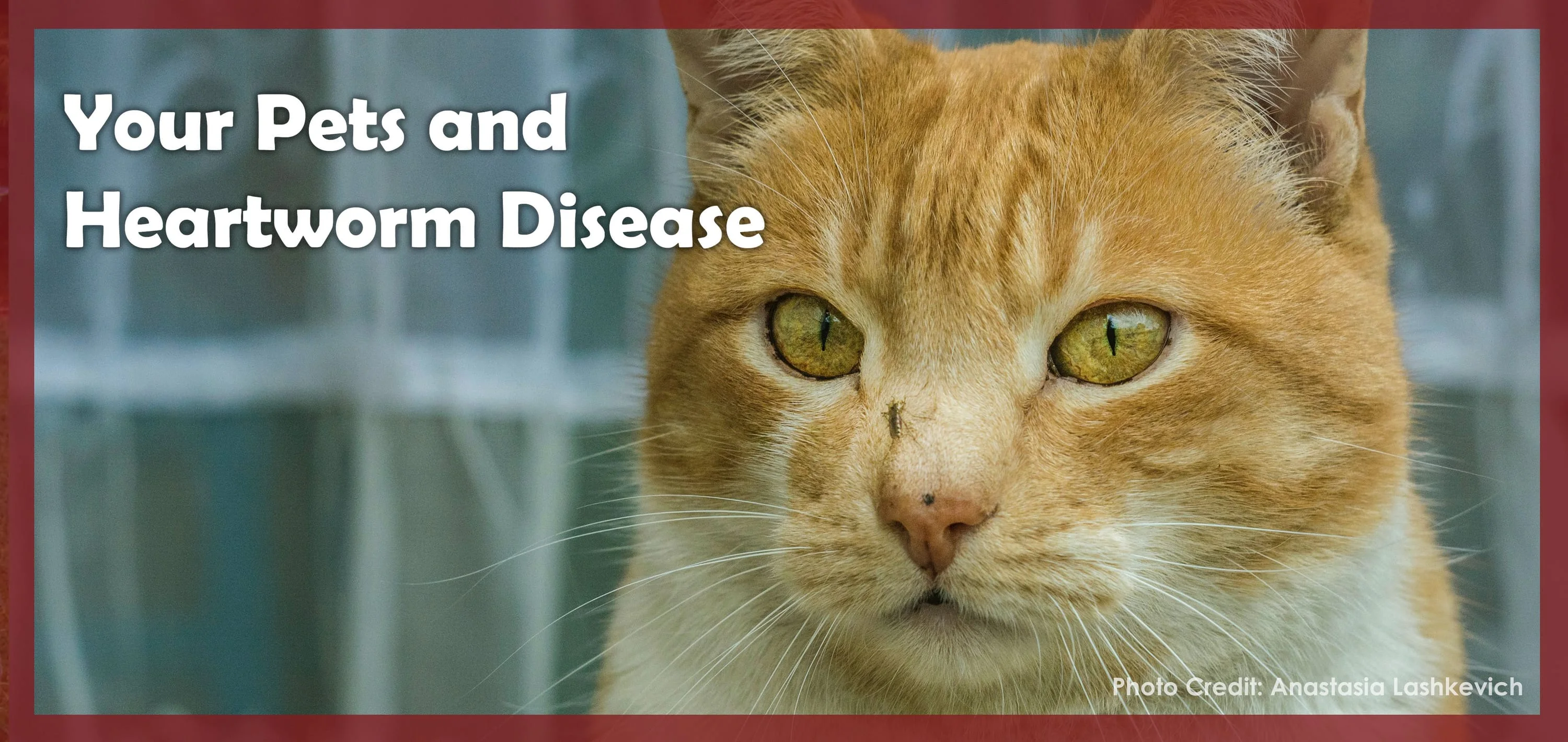April is Heartworm Awareness Month. This disease was once almost unheard of in Southern California; however, in recent years, changes in weather patterns, the introduction of new mosquito species, and the import of dogs from areas where heartworms are common had lead to a significant increase in incidence of this disease. Heartworm disease is not only increasing in our pet population, but is becoming more common in the wild animal population, putting our pet dogs and cats even further at risk.
What is Heartworm Disease
Heartworms disease is a very serious infection that is extremely common in many parts of the United States. It is caused by footlong worms that as adults reside in the heart, lungs, and associate blood vessels. As the disease progresses, it can cause severe lung disease, heart failure and damage to other organs of the body. It is ultimately be fatal if left untreated.
Heartworm disease can affect dogs, cats, and ferrets as well as wild mammals such as wolves, coyotes, foxes, sea lions, and very rarely humans. Wild animals that live in proximity to humans (such as coyotes in Southern California) can be carriers of this disease and increase the risk of transmission to domestic pets.
Heartworm in Dogs vs Cats
Dogs are a “natural host” for heartworm, meaning the worms live inside dog and are able to grow to adulthood, mate, and produce offspring. Dogs have been known to harbor several hundred worms in their bodies. This large worm burden can cause lasting damage to the heart, lungs, and arteries. The damage can be severe and may become permanent, even after the infestation has been treated.
Infection in cats is very different than in dogs. Most worms do not survive to adulthood and cats that do carry adult worms usually don’t have more than 1-3. This actually makes heartworm harder to diagnose in cats, but does not mean it is harmless. Immature heartworms in cats can cause a pulmonary condition known as Heartworm Associated Respiratory Disease (HARD), which can have some significant symptoms. Additionally, heartworm in cats cannot be “treated” in the same way as dogs, so prevention is the only real means of protecting cats.
Transmission
Mosquitos are responsible for the transmission of heartworm between pets. Adult female heartworms living inside a host animal produce microscopic offspring known as microfilaria. When the mosquito bites the infected animal, it picks up the immature heartworm in the blood meal. These microfilaria mature inside the mosquito over the period of 10-14 days. At this point, they are in the “infective stage” where they are able to be transmitted to another animal through a mosquito bite. Once the heartworms mature, they can live for 5-7 years in dogs and up to 2-3 years in cats, which is a long time to reproduce, do damage, and spread.
Signs of Heartworm
In the early stages of infection, many animals show few to no symptoms at all. The longer the pet is infected however, the more clinical signs develop. In dogs, mature worms live in the heart, lungs, and associated vessels, so dogs with advanced infections show signs similar to heart and/or lung disease. Dogs may develop a mild to persistent cough, exercise intolerance, reluctance to exercise, decreased appetite, lethargy, and weight loss. As this disease progresses, it can even cause heart failure and the dog may develop fluid in the belly resulting in a swollen abdomen. Dogs with large numbers of heartworms can even develop sudden blockages of blood flow within the heart leading to life-threatening cardiovascular collapse. Heartworm disease in cats has signs ranging from the subtle to the dramatic. Symptoms may include coughing and/or asthma-like episodes, vomiting, lack of appetite, or weight loss. Unfortunately, in some cases, the first sign is sudden collapse or even death.
Treatment for Heartworm Disease
While most infected dogs can successfully be treated, the treatment is both long and can be uncomfortable. In advanced cases with significant clinical signs, it can even be dangerous. The dog must first be stabilized from any significant symptoms it may have. Once this has achieved, the treatment involves several steps over many weeks. During this time it is imperative that the dog’s activity be restricted because physical exertion increases the rate at which the heartworms can do damage to the heart and lungs.
For cats, there is no approved heartworm treatment. Because cats are not an “ideal” host for heartworms, some infections resolve on their own. Cats should be treated for symptoms associated with infection and maintained on heartworm prevention to prevent reinfection.
Preventing Heartworm Disease
While heartworm disease is a dangerous infection that is difficult to treat, it is very easy to prevent. There are multiple safe and proven products (usually administered once monthly) on the market to help protect dogs and cats from this dangerous disease. These products are economical, effective, easy to administer, and have few side effects. As a bonus, many of them also prevent against some internal parasite infections. There are also combination products on the market which protect against heartworm, internal parasites, fleas, and even ticks. For dogs over seven months old, it is recommended that they be heartworm tested prior to starting preventatives. Additionally, dogs should stay on the product year-round as mosquitos can be found during all times of year. Cats can be started on heartworm preventative without prior testing.
If you have questions about heartworm disease or your pet’s prevention status, please give us a call at (760) 736-3636!

